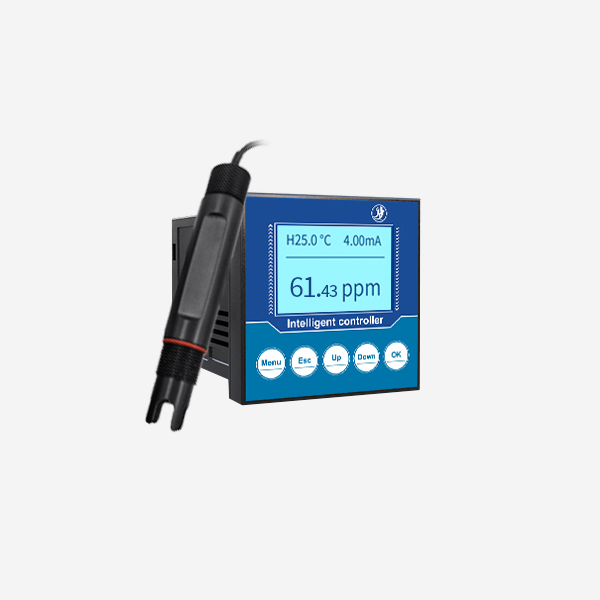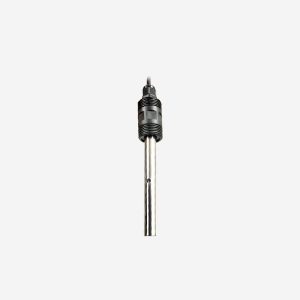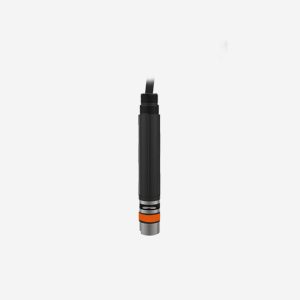Product Introduction:
Chlorine meter is a kind of industrial water quality sensor. The chlorine electrode is made of high-purity platinum with high protection level and can work normally even in harsh environments. This residual chlorine sensor has two signal outputs, RS485 and analog. Widely use measuring chlorine levels in natural water, surface water, groundwater and aquaculture applications.
* Models:JXBS-3001-Residual chlorine
* Minimum order quantity: 1 piece
* Delivery time: within 24 hours
Residual chlorine meter Parameters:
DC power supply: 9-24V DC
Power consumption: ≤0.15W (@12V DC, 25℃)
Measurement accuracy: ±5% or 0.05mg/L
Output signal: 485/4-20mA/0-10V
Operating temperature: 5~50℃
Repeatability: ±4%
Probe size: 155mm*12mm (length * diameter)
Medium PH range: 4~9PH

Residual chlorine meter Features:
1.Diversified functions: The chlorine meter not only monitors the concentration of chloride ions, installed a built-in temperature sensor, which can automatically compensate for temperature.
2.High precision: This residual chlorine sensor has high sensitivity, and the internal circuit is designed with anti-interference, which can accurately measure the residual chlorine value in the solution.
3.Simple maintenance: One-piece design, compact structure, no extra accessories and reagent filling, avoid the problem of disassembly, easy to maintain during use, just clean the appearance.
4.Long using life: The residual chlorine electrode is made of high-purity platinum, which is not easy to be damaged, and the overall waterproof shell is effectively anti-corrosion. We offer one year warranty.
5.easy to install: The end of the housing is a standard 3/4 up and down mounting thread design for easy installation. The chlorine probe and bracket are fixed by thread, no need for other tools. Very easy to use.
6.Wide application: This chlorine meter is suitable for online monitoring of chlorine ion in medicine, environmental protection, tap water monitoring, drinking water, and industrial process water disinfection processes.
Attention:
How to calibrate residual chlorine meter? 1. Zero calibration: Place the chlorine probe in the air and perform zero point after the value is stable. 2. Slope calibration: Place the chlorine probe in the flow cell flowing with the residual chlorine standard solution, and perform slope calibration after the value is stable. It is recommended to use 1-2 mg/L HClO standard solution. Regarding the preparation and determination of standard solutions, please refer to the determination of residual chloride in the national standard. Note: The Chlorine meter has been calibrated before leaving the factory. Because the preparation of the standard solution requires a lot of personnel, non-professionals may not be able to do this work. Only when the value is determined to be inaccurate, it is recommended that the user calibrates by himself.
FAQs:
1. In what form does residual chlorine exist in water?
There are three forms of residual chlorine in water: total residual chlorine, free residual chlorine and combined residual chlorine.
Combined residual chlorine, also known as combined residual chlorine, refers to the chlorine and ammonia compounds in water.
Free residual chlorine, also known as free residual chlorine, refers to OC1+, HOCl, Cl2 and so on in water. It has fast bactericidal speed and strong bactericidal power, but it disappears quickly.
Total residual chlorine is the sum of bound and free residual chlorine.
2. How do I maintain the residual chlorine electrode?
Chlorine sensors generally do not require routine maintenance. When there is an obvious fault, please do not open the repair, and contact us as soon as possible!
After using the chlorine electrode, clean the electrode head with clean water and cover it with a protective cover.
If dust and mineral components adhere to the electrode diaphragm, sensitivity is reduced and adequate measurements may not be possible. Make sure the platinum ring is clean.
Good residual chlorine electrode platinum induction ring should always be kept clean and bright. If the platinum ring of the electrode becomes rough or contaminated after measurement, please clean it in the following way: (for reference).
1. Inorganic pollution: Immerse the electrode in 0.1mol/L dilute hydrochloric acid for 15 minutes, gently wipe the remaining chlorine electrode platinum ring with a cotton swab, and then clean it with tap water.
2, organic matter or oil: the electrode is immersed in the tap water containing a small amount of detergent (such as dish soap), thoroughly clean the induction surface of the electrode sensor. Gently wipe the platinum ring of the electrode with a cotton swab, then rinse with running water to complete the cleaning. If the electrode platinum ring has formed an oxide film, please use toothpaste or 1000 mesh sandpaper to moderately sand the sensor surface, and then wash with running water.






Reviews
There are no reviews yet.